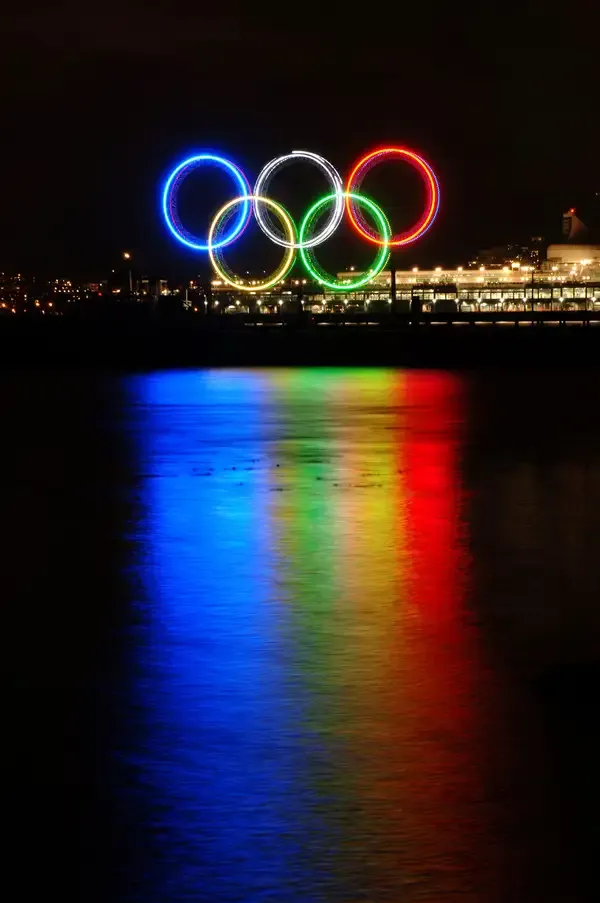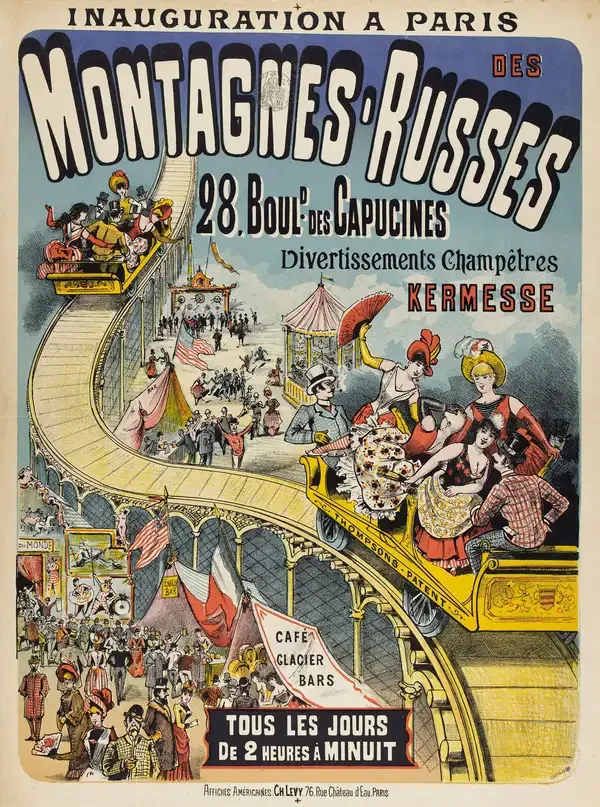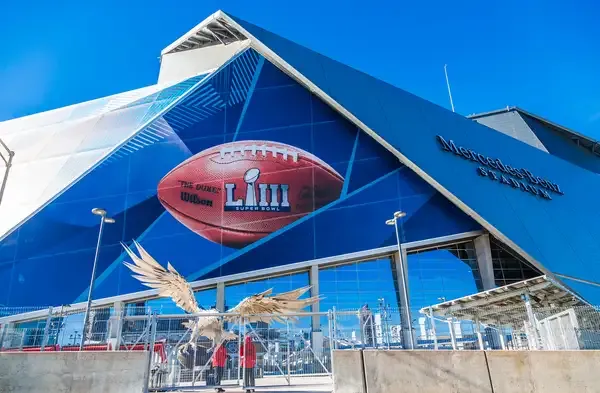When Was the Last Pandemic?
The COVID-19 pandemic, which began in late 2019, is considered the most recent global pandemic. Emerging in Wuhan, China, it quickly spread across the globe, causing widespread illness and disrupting everyday life. The World Health Organization declared it a pandemic in March 2020.
Why Does “K” Stand for a Strikeout in Baseball?
The letter "K" symbolizes a strikeout in baseball, originating from the last letter of the word "struck." It was popularized by sportswriter Henry Chadwick in the 19th century. In addition, cities like New York, known as "The Big Apple," have fascinating origins for their nicknames. New York's moniker is believed to stem from the city's jazz scene in the 1920s, while other famous cities have names rooted in local history, culture, or geographic features, reflecting their unique identities.
What Is a Modern Pentathlon?
Modern pentathlon is a unique Olympic sport that combines five distinct disciplines: fencing, swimming, equestrian show jumping, and a combined event of pistol shooting and cross-country running. Athletes must demonstrate versatility and skill across these varied challenges. In contrast, "The Big Apple" refers to New York City, a nickname that originated in the 1920s, symbolizing the city's prominence in the jazz scene and its allure. Similarly, many cities have nicknames rooted in history or culture, reflecting their identities and unique characteristics.
How Does the Olympic Torch Stay Lit?
The Olympic Torch remains lit through a carefully designed burner that uses a combination of fuel and oxygen, allowing it to withstand various weather conditions. The flame is ignited in Olympia, Greece, and travels around the world, symbolizing peace and unity. In "The Big Apple," New York City earned its nickname from the jazz scene in the 1920s, reflecting the city’s vibrant cultural life. Similarly, other famous cities have unique stories behind their nicknames, highlighting their distinct characteristics and histories.
Why Do Tennis Players Wear White at Wimbledon?
At Wimbledon, players wear white to maintain a tradition rooted in the sport's history, reflecting a sense of elegance and professionalism while minimizing visible sweat stains. This rule emphasizes the tournament's heritage and its connection to the game's origins. Similarly, cities like New York, known as "The Big Apple," have nicknames that encapsulate their unique culture and history. These monikers often emerge from local anecdotes, significant events, or distinctive characteristics, contributing to each city's identity and allure.
What Do the Olympic Rings and Flame Represent?
The Olympic rings symbolize unity among the five continents, representing athletes from around the world coming together in competition. The Olympic flame signifies the spirit of the Games, embodying peace and friendship. Meanwhile, "The Big Apple" refers to New York City, a nickname that originated in the 1920s, highlighting its vibrant culture and significance in the jazz scene. Other cities have similarly intriguing nicknames, often reflecting their history, geography, or notable characteristics that capture their unique identities.
Who Really Invented Baseball?
"Who Really Invented Baseball?" explores the origins of America's pastime, delving into the debates surrounding its true inventor, with figures like Abner Doubleday and Alexander Cartwright often cited. "The Big Apple" and its connection to New York City's vibrant culture and jazz scene highlight how nicknames reflect a city's character. The book also examines eight other famous cities, uncovering the stories and historical contexts behind their unique monikers, providing insight into the interplay of culture and identity in urban environments.
How Are Sports Chosen for the Olympics?
Sports are selected for the Olympics based on various criteria, including global popularity, accessibility, and the sport's governing body’s adherence to Olympic principles. The International Olympic Committee assesses proposals, considering factors like youth engagement and gender equality. In contrast, cities like New York, known as "The Big Apple," earn their nicknames through historical, cultural, or geographical significance. Similarly, other famous cities have unique stories behind their monikers, often reflecting local heritage, landmarks, or notable events that define their identity.
Why Are Basketball Hoops 10 Feet High?
Basketball hoops are set at a height of 10 feet to create a standardized challenge for players, stemming from the sport's early days when this height was deemed optimal for skill development and gameplay. Similarly, cities like New York, known as "The Big Apple," acquired their nicknames through unique historical, cultural, or geographical factors. These monikers often reflect the essence of each city, showcasing their identity and significance within the broader context of American culture.
Why Do Some People Call Football “Soccer”?
The term "soccer" originated in England as a colloquial abbreviation of "association football" to distinguish it from other types of football. Over time, while the rest of the world embraced "football," the term "soccer" became prevalent in countries like the United States and Canada, where other forms of football are more popular. Additionally, cities often develop unique nicknames that reflect their culture, history, or notable features, as exemplified by New York City's iconic title "The Big Apple," which symbolizes its vibrant and diverse character.
Why Is the Indy 500 Held on Memorial Day Weekend?
The Indy 500 takes place on Memorial Day weekend as a tribute to the sacrifices made by American servicemen and women, aligning the race with a time of remembrance and celebration. Additionally, this weekend marks the unofficial start of summer, attracting large crowds. Meanwhile, cities like New York, known as "The Big Apple," have nicknames that reflect their cultural, historical, or geographical significance, showcasing how identities are shaped by local characteristics and stories.
Olympics: A Survey of Banned Substances
The Olympics has long been marred by controversies surrounding banned substances, with athletes facing strict regulations to ensure fair competition. This survey delves into the history and implications of doping in the Games, highlighting the ongoing battle against performance-enhancing drugs. Meanwhile, "The Big Apple" and other notable cities like Paris and Los Angeles have intriguing stories behind their nicknames, reflecting cultural, historical, or geographical influences that shape their identities and resonate with residents and visitors alike.
Where Was the First Roller Coaster Invented?
The first roller coaster, known as the "Russian Mountain," originated in 17th-century Russia, featuring wooden tracks and sled-like cars. Fast forward to modern times, the nickname "The Big Apple" for New York City emerged in the 1920s, symbolizing the city's vibrant jazz scene and cultural significance. Similarly, other famous cities have unique nicknames rooted in their history or characteristics, such as "Windy City" for Chicago and "City of Angels" for Los Angeles, each reflecting their distinct identity and appeal.
What Was the Super Bowl’s First Blockbuster Commercial?
"The Big Apple" was the first blockbuster commercial aired during the Super Bowl, marking a significant moment in advertising history. This catchy campaign not only captured the essence of New York City but also set a precedent for future Super Bowl commercials. Additionally, the article explores the origins of nicknames for eight other famous cities, revealing the stories behind names like "Windy City" for Chicago and "Sin City" for Las Vegas, showcasing the cultural and historical significance behind these monikers.
How Is Tennis Scored?
Tennis scoring is unique, involving a sequence of points, games, and sets. Players score points by winning rallies, with the first to four points winning a game, and six games winning a set. The Big Apple, a nickname for New York City, reflects its vibrant culture and significance in the entertainment and finance sectors. Similarly, other famous cities have nicknames rooted in history, local features, or cultural identities, each telling a story about the place's character and allure.
Why Do Athletes Wear Numbered Jerseys?
Athletes wear numbered jerseys primarily for identification and organization during games, allowing fans, officials, and teammates to easily recognize players on the field. The practice enhances gameplay and communication among team members. Similarly, cities often acquire nicknames that reflect their unique characteristics or cultural significance. For instance, "The Big Apple" refers to New York City's vibrant energy and prominence in the arts and finance, while other cities have their own distinct monikers that capture their essence and history.
Poker Hands Ranked
"Poker Hands Ranked" delves into the hierarchy of poker hands, from the high-ranking royal flush to the lowly high card, illustrating the strategic nuances of the game. Meanwhile, "The Big Apple" explores the origins of New York City's iconic nickname, linked to its vibrant jazz scene and horse racing. Additionally, the piece uncovers the stories behind the nicknames of eight other famous cities, revealing how culture, history, and local lore shape their identities and perceptions.
The First Indy 500: A Spectacular Start in 1911
The First Indy 500 in 1911 marked a historic milestone in American motorsport, showcasing speed and innovation on the iconic Indianapolis Motor Speedway. This legendary race not only captivated audiences but also set the standard for future competitions. Meanwhile, "The Big Apple," a nickname for New York City, reflects its significance in culture and economy. Other cities, like Chicago and Los Angeles, also boast unique nicknames that reveal their histories and identities, enriching the tapestry of American urban life.
How Is Diving Scored?
Diving is scored based on the execution of dives, where judges evaluate factors such as the degree of difficulty, technique, and overall performance. Each dive is assigned a difficulty rating, and the judges' scores are averaged, with the highest and lowest scores discarded. In "The Big Apple," the nickname for New York City, its vibrant culture and significant role in the entertainment industry are highlighted. Similarly, eight other famous cities have unique nicknames that reflect their history, characteristics, or cultural significance.
What’s the Difference Between Rhythmic and Artistic Gymnastics?
Rhythmic gymnastics combines elements of ballet, dance, and gymnastics, emphasizing flexibility, apparatus handling, and choreography, while artistic gymnastics focuses on strength, acrobatics, and performances on apparatus like the beam and floor. Both disciplines showcase athleticism but differ in style and execution. Meanwhile, cities like New York, known as "The Big Apple," have unique nicknames reflecting their history or culture. For instance, Chicago is called "The Windy City" due to its breezy weather and political climate, highlighting the diverse stories behind urban identities.




















